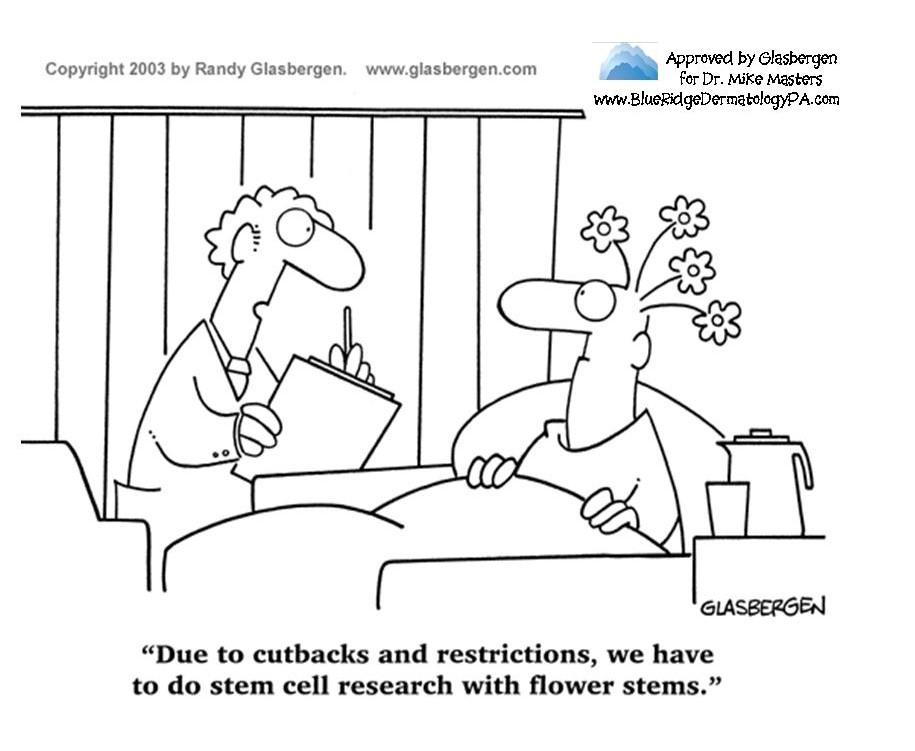Stem Cells
- posted: Jan. 05, 2015
- cosmetics

Actually, that's not quite what stem cells are about.
Stem cells are all about healing and repair (after they have been busy early in life creating cells and tissue).
They are the building blocks of life and repair. Sort of like falling snow is to a snowman (except for the carrot nose and coal eyes--maybe that isn't the best analogy I've ever made.)
The earliest stem cells, the first cells produced by a fertilized egg, called embryonic stem cells are pluripotent and can become any of the 220 different cells in the human body.
There are 2 problems with embryonic stem cells: 1. The ethical complications and controversies associated with creating and destroying human life, and 2. embryonic stem cells have very limited immune-matching potential. Because, just like solid organ transplants, if the stem cells are not immune-matched, they will be rejected by the recipient. The only way to avoid this is to administer immune-suppression drugs, which have their own long list of risks and complications.
Enter parthenogenesis (say what?)
This is where a human oocyte (egg) can be manipulated to produce pluripotent stem cells. They avoid the ethical controversy involved in the creation or destruction of a human embryo. And these stem cells can be a source of therapeutic cells for millions of people. These eggs are never exposed to the male gamete (sperm) and could never develop into a human organism.
Cool! That means I can use these stem cells.

The use of stem cells involves the use of growth factors and other proteins that are removed from pluripotent stem cells via a rapid centrifugation process (rapid spinning). The resulting serum includes as many as 200 different types of proteins--the most important being Elastin, Collagen, Epidermal Growth Factors, Keratinocyte Growth Factors and Fibroblast Growth Factors. The donor's cytoplasm and mitochondrial DNA are specifically excluded. (Think of cracking an egg, throwing away the yolk and shell and using the white.) What is relatively new is the discovery of how proteins extracted from human stem cells can build new collagen and elastin and reverse the symptoms of aging.
The earlier in differentiation the stem cell, the more potent are its growth factors and proteins. Pluripotent stem cells (that can turn into any human specialized cell) thus have the most powerful growth factors and proteins that restore youthfulness to aging, damaged skin.
I've been using these products over the last month (I think I'm the first in the area to be using them) alone and in conjunction with other treatments. I've been impressed.
Well, that's it for my first blog. Just in case you're wondering we bloggers can be very deep thinkers. For instance, if pencils came with erasers at both ends, what would be the point?


